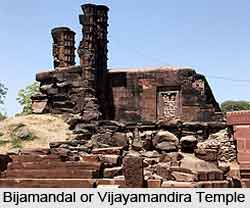 Bijamandal is located at Vidisha city, built in 11th century AD, but was demolished in 1682 AD, during the reign of Mughal king Aurangzeb and the mosque was erected on this very site, using the same material of the temple.
Bijamandal is located at Vidisha city, built in 11th century AD, but was demolished in 1682 AD, during the reign of Mughal king Aurangzeb and the mosque was erected on this very site, using the same material of the temple.
The mosque came to be known as Alamgiri Masjid. From an inscription carved on one of the pillars of the original Bijamandal temple, evidence speaks that the temple was sacred to Goddess Charchika. The inscription also records the name of King Naravarman. Vijaya was probably another name of this very goddess after whom the temple is named Vijayamandira.
This article is a stub. You can enrich by adding more information to it. Send your Write Up to content@indianetzone.com





















